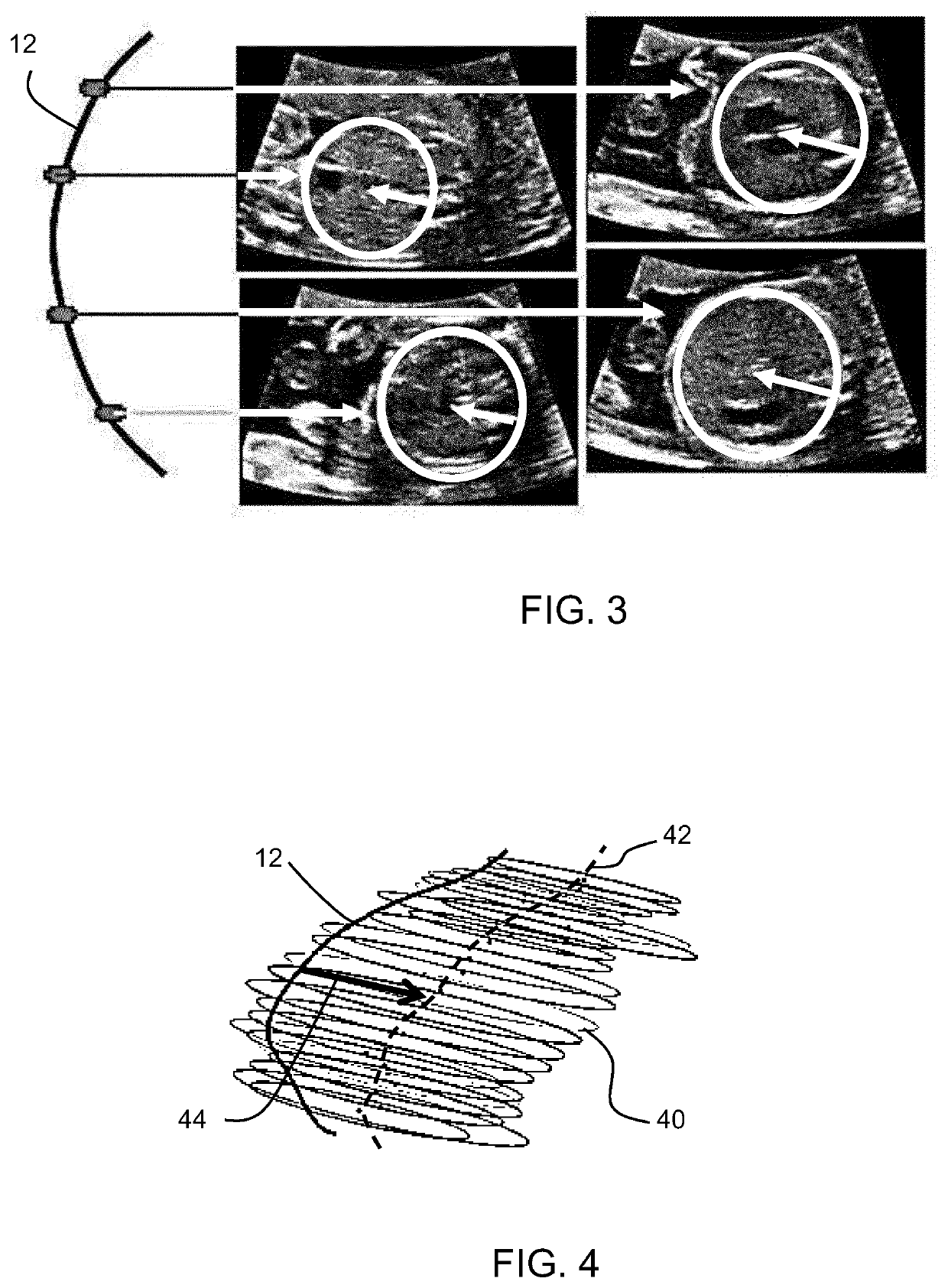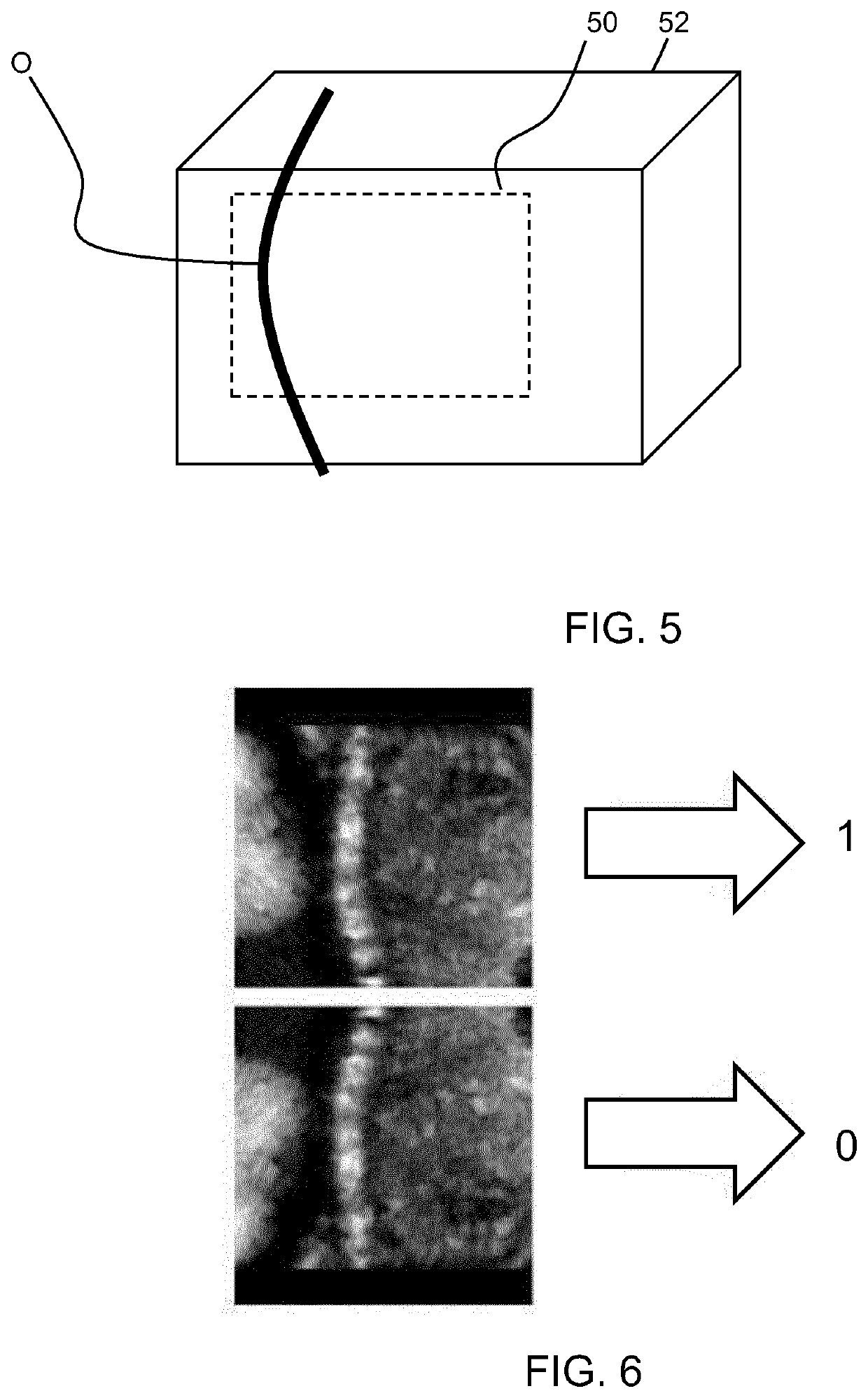Fetal ultrasound image processing
a processing and ultrasound technology, applied in image enhancement, ultrasonic/sonic/infrasonic image/data processing, instruments, etc., can solve problems such as difficult tasks and difficult tasks, and achieve the effect of reducing uncertainties or removing them
- Summary
- Abstract
- Description
- Claims
- Application Information
AI Technical Summary
Benefits of technology
Problems solved by technology
Method used
Image
Examples
Embodiment Construction
[0083]The invention provides a computer implemented method for processing a 3D fetal ultrasound image. A 3D fetal ultrasound image is obtained (either acquired or received from memory), and the spine is detected within the image. This enables a first reference axis to be defined. A second reference axis is defined perpendicular to the first reference axis, and the 3D fetal ultrasound image is updated (e.g. rotated in 3D space) using the first and second reference axes and an up / down (elevation) orientation detection. This provides a normalization of the orientation of the image, so that a machine learning approach is better able to identify landmarks within new images.
[0084]FIG. 1 shows a representation of a fetus comprising a head 10 and spine 12. The fetus is positioned within 3D space as defined by the axes x,y,z and with an origin at the center of the spine.
[0085]When selecting 2D ultrasound image planes from a 3D ultrasound scan, planes are selected to pass through landmarks of...
PUM
 Login to View More
Login to View More Abstract
Description
Claims
Application Information
 Login to View More
Login to View More - R&D
- Intellectual Property
- Life Sciences
- Materials
- Tech Scout
- Unparalleled Data Quality
- Higher Quality Content
- 60% Fewer Hallucinations
Browse by: Latest US Patents, China's latest patents, Technical Efficacy Thesaurus, Application Domain, Technology Topic, Popular Technical Reports.
© 2025 PatSnap. All rights reserved.Legal|Privacy policy|Modern Slavery Act Transparency Statement|Sitemap|About US| Contact US: help@patsnap.com



